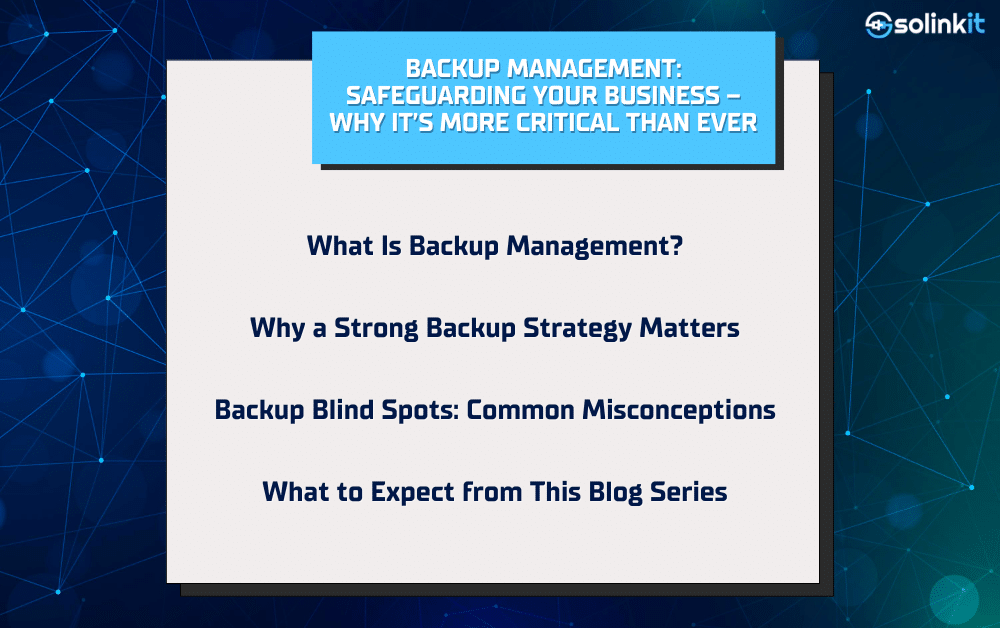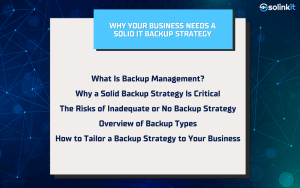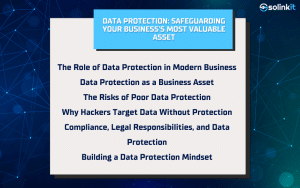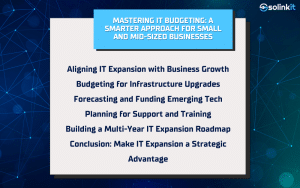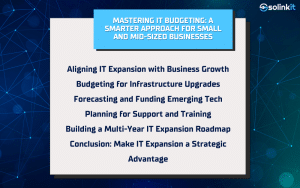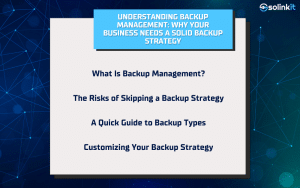Imagine losing access to your customer records, financial data, or entire project files in a matter of minutes. It’s a nightmare scenario—but one that happens more often than most business owners realize. From ransomware attacks and accidental deletions to power outages and hardware failures, your business is always one unexpected event away from disruption. Without a reliable backup management strategy in place, the damage can be catastrophic—not just to your data, but to your operations, reputation, and bottom line.
What Is Backup Management?
A Safety Net for Your Critical Business Data
Backup management is the strategic process of creating and maintaining copies of your important data. But it’s more than just “saving a file” — it’s a system that ensures your business can recover and continue operating smoothly after a disruption.
Part of a Broader Business Continuity Plan
Effective backup management doesn’t live in isolation. It’s part of a larger IT strategy that includes disaster recovery, compliance, cybersecurity, and system resilience.
Why a Strong Backup Strategy Matters
Modern Threats Are Constant and Evolving
From phishing emails and ransomware to hard drive crashes and natural disasters, businesses today face a wide range of threats that can result in partial or complete data loss.
Downtime Affects More Than Just Revenue
In addition to financial losses, businesses face legal risks, damaged reputations, broken customer trust, and even permanent data destruction without proper backups.
Backup Blind Spots: Common Misconceptions
“We Use the Cloud, So We’re Covered”
Cloud platforms may offer some versioning or file recovery, but that doesn’t mean your business has a comprehensive, managed backup solution. Cloud sync is not the same as cloud backup.
“Our IT Guy Said We Had a Backup Setup”
If you’re not regularly reviewing your backup strategy and testing your ability to restore, you could be operating under a false sense of security.
“We’ve Never Had a Problem”
Past success doesn’t equal future safety. The time to prepare for a data loss event is before it happens.
What to Expect from This Blog Series
An Easy-to-Follow Roadmap to Backup Management
Over the next four blog posts, we’ll break down the key components of a reliable, modern backup strategy so your business can make informed, confident decisions.
Coming Up:
- Part 1: Choosing the Right Backup
Understand the pros and cons of full, incremental, differential, and cloud-based backup systems—and which is right for your business. - Part 2: Backup Scheduling 101
Learn how to set backup frequencies, automate tasks, and avoid disruptions while keeping data protected. - Part 3: Testing and Restoring Backups
Discover the best ways to test your backup system and guarantee a successful recovery when it counts most. - Part 4: Final Tips & Best Practices
Round out the series with practical advice on scalability, compliance, and building a future-proof strategy.
Ready to Safeguard Your Business?
This introduction is just the first step. In the upcoming posts, we’ll break down the key elements of effective backup management—from selecting the right type of backup to restoring data when it counts. Use this series to assess your current strategy, identify any gaps, and take proactive steps toward better protection. If you’re unsure where your business stands or want expert guidance, contact SoLinkIt today. Our team can help you design a secure, scalable backup solution tailored to your needs—before disaster strikes.
